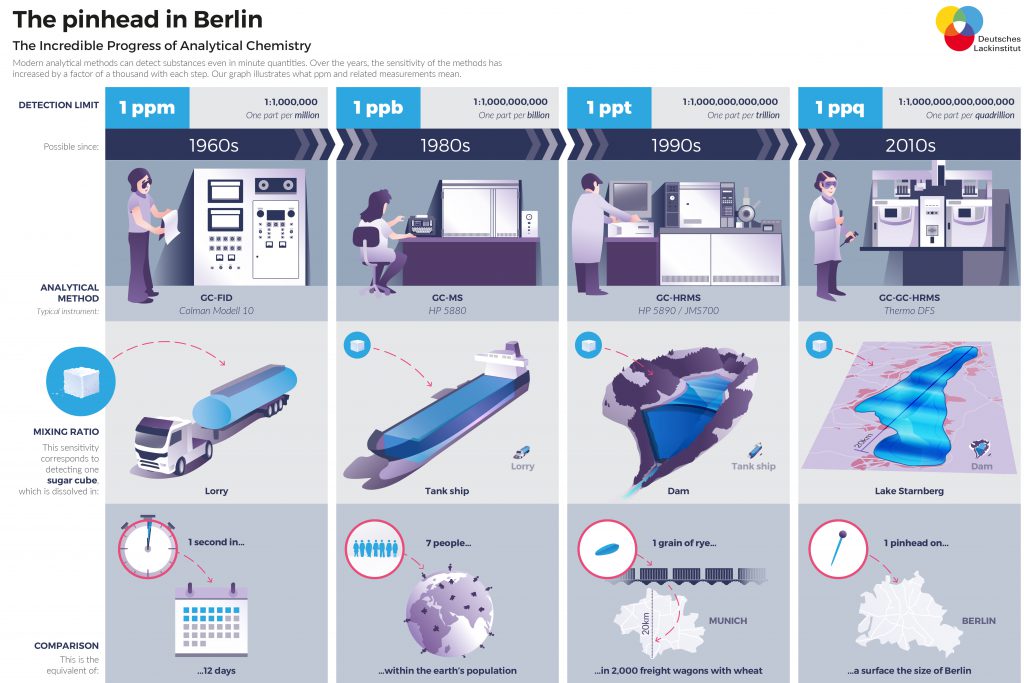The progress of analytical chemistry
Finding a pinhead in Berlin is impossible? Not for modern instruments of analytical chemistry. To show the incredible progress of this discipline in the last 50 years, the German Paint and Printing Ink Association has published an infographic which explains the sensitivity of measurement methods and the units of detection limits for laymen:
In the 1960s, for instance, the instruments of analytical chemistry were able to detect 1 ppm (part per million), which is the equivalent of a sugar cube in a lorry. Only 50 years later, the instruments are even able to detect a dissolved sugar cube in the Lake Starnberg, which has a volume of 3 billion m³. The corresponding unit is called 1 ppq (part per quadrillion).
However, one needs to keep in mind that finding a substance says nothing about the risk involved. For this, one needs to make a risk assessment by considering the hazard properties as well as the quantity of the substance. In the ink industry, we’re normally concerned with units in the ppb area – that’s comparable with a sugar cube in a tank ship or seven people within the earth’s population. The detection limit for non-evaluated substances in food, for example, is 10 ppb (part per billion).
